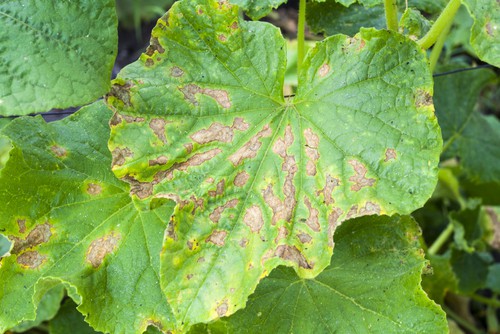Tiny white spots on leaves can be a sign of a problem with the plant. These spots can be caused by a variety of factors, including pests, fungi, and environmental stressors. Understanding the causes of these white spots can help gardeners identify and treat the problem effectively.
Common causes of white spots on leaves include powdery mildew, downy mildew, and leaf spot diseases. Powdery mildew is a fungal disease that appears as a white, powdery growth on the surface of the leaves.
Downy mildew, on the other hand, is a fungal disease that appears as yellow or white spots on the leaves, usually on the underside. Leaf spot diseases, caused by fungi or bacteria, can cause white spots that may turn brown or black as the disease progresses.
Affected plants can vary depending on the specific cause of the white spots. Some plants that are commonly affected include roses, cucumbers, tomatoes, and squash.
Identifying and treating white spots on leaves can involve a variety of methods, including pruning affected areas, removing infected leaves, and using fungicides or other treatments. Cultivation practices, such as proper watering and fertilization, can also help prevent white spots from forming in the first place.
Key Takeaways
- White spots on leaves can be caused by pests, fungi, and environmental stressors.
- Common causes of white spots include powdery mildew, downy mildew, and leaf spot diseases.
- Identifying and treating white spots may involve pruning, removing infected leaves, using fungicides, and implementing proper cultivation practices.
Check out these other top posts in this category:
Understanding Tiny White Spots on Leaves
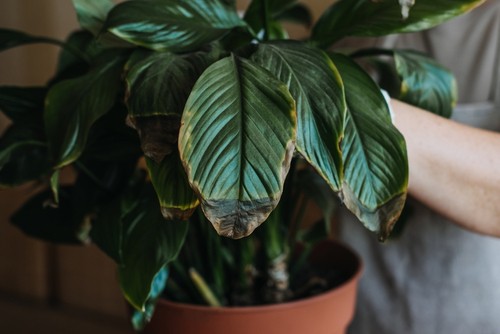
Tiny white spots on leaves can be a sign of a variety of issues, ranging from stress and sunburn to nutrient deficiencies and viral infections. Understanding the underlying cause of the white spots is crucial in determining the appropriate treatment and preventing further damage to the plant.
One common cause of white spots on plant leaves is stress, which can be caused by a variety of factors such as changes in temperature, humidity, or lighting conditions. When a plant is stressed, it may develop white spots as a defense mechanism to protect itself from further damage.
Another common cause of white spots on leaves is sunburn, which can occur when a plant is exposed to too much direct sunlight. This can cause the leaves to become discolored and develop white spots. Providing shade or moving the plant to a more suitable location can help prevent further damage.
Nutrient deficiencies can also cause white spots on leaves. For example, a deficiency in calcium can cause the development of white spots on the leaves of tomatoes and other plants. Ensuring that the plant is receiving adequate nutrients through proper fertilization can help prevent this issue.
Viruses and leaf spot diseases can also cause white spots on leaves. These issues can be more difficult to treat and may require the use of fungicides or other treatments. It is important to properly identify the issue to determine the appropriate treatment.
Tiny White Spots on Leaves – 3 Common Problems
White spots on leaves are a common problem that gardeners and plant owners face. These spots can be caused by a variety of factors, including fungal diseases, pests, and environmental factors. In this section, we will discuss some of the most common causes of white spots on leaves.
1. Fungal Diseases
Fungal diseases are one of the most common causes of white spots on leaves. Powdery mildew is a common fungal disease that can cause white spots on leaves.
Powdery mildew appears as a white, powdery growth on the surface of the leaves, which can cause yellowing and curling of the affected foliage. It is caused by high humidity and poor air circulation.
Another fungal disease that can cause white spots on leaves is downy mildew. Downy mildew is caused by too much water and high humidity.
2. Pests

Pests can also cause white spots on leaves. Mealybugs are a common pest that can cause white spots on leaves. They feed on the sap of the plant and leave behind a white, powdery substance.
Spider mites can also cause white spots on leaves. They feed on the underside of the leaves and can cause the leaves to turn yellow and fall off.
3. Environmental Factors
Environmental factors can also cause white spots on leaves. Direct sunlight can cause white spots on leaves, especially on indoor plants. Too much water can also cause white spots on leaves.
Watering plants too often or not allowing the soil to dry out between waterings can lead to root rot, which can cause white spots on leaves. Poor air circulation can also cause white spots on leaves, as it can lead to high humidity.
Specific Diseases Leading to White Spots
There are several diseases that can cause tiny white spots on leaves. In this section, we will discuss some of the most common fungal diseases that lead to white spots on leaves.
1. Septoria Leaf Spot
Septoria leaf spot is a fungal disease that causes small, white spots on the leaves. The spots may have a dark border and can merge together to form larger spots. The disease is caused by the fungus Septoria lycopersici.
To prevent septoria leaf spot, it is important to remove any infected leaves immediately and avoid overhead watering. Fungicides can also be used to control the disease.
2. Downy Mildew
Downy mildew is another fungal disease that causes white spots on leaves. It appears as small, white, furry areas on the underside of the leaves, and pale green spots on the upper side.
If some of those white spots on the plant leaves have fused together to become blotches, they should look like white powder. Downy mildew is caused by the fungus-like organism called oomycetes.
To prevent downy mildew, it is important to avoid overhead watering and keep the plant dry. Fungicides can also be used to control the disease.
3. Blight
Blight is a fungal disease that causes white spots on leaves. It appears as irregularly shaped spots that are often surrounded by a yellow halo. Blight is caused by the fungus Alternaria solani.
To prevent blight, it is important to remove any infected leaves immediately and avoid overhead watering. Fungicides can also be used to control the disease.
4. Powdery Mildew
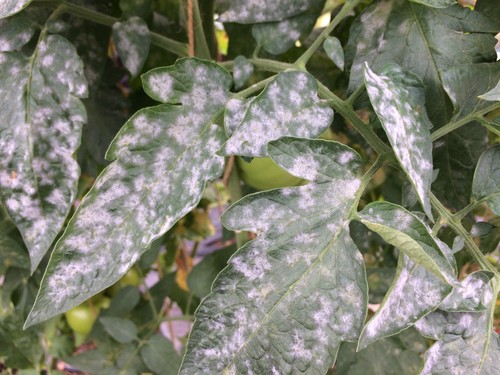
Powdery mildew is a fungal disease that appears as a white, powdery growth on the surface of the leaves. It can cause yellowing and curling of the affected foliage. Powdery mildew is caused by fungal spores that are spread by wind or insects. It thrives in warm and humid conditions.
To prevent powdery mildew, it is important to keep the plant dry and well-ventilated. Avoid overhead watering and remove any infected leaves immediately. Fungicides can also be used to control the disease.
Affected Plants
White spots on leaves can be a sign of various diseases that affect a wide range of plants. Here are some of the plants that are commonly affected by this issue:
1. Tomatoes and Peppers
Tomatoes and peppers are both members of the nightshade family and are susceptible to powdery mildew, a fungal disease that causes white spots on leaves.
The disease can spread quickly in warm and humid conditions, so it is important to catch it early and take action to prevent its spread. Good air circulation and proper watering can help prevent powdery mildew from taking hold.
2. Roses
Roses are prone to a fungal disease called black spot, which causes circular black spots on the leaves, as well as yellowing and defoliation. White spots may also be present, especially on the undersides of the leaves.
Black spot can be prevented by planting disease-resistant varieties and providing good air circulation and proper watering.
3. Begonias
Begonias are popular indoor and outdoor plants that are prone to powdery mildew, which causes white spots on leaves. In addition to white spots, the disease can also cause yellowing and curling of leaves. Good air circulation and proper watering can help prevent powdery mildew from taking hold.
4. Indoor Plants
Many indoor plants can be affected by powdery mildew, including spider plants, peace lilies, and African violets. The disease can be prevented by providing good air circulation, avoiding overwatering, and keeping the humidity level low.
Identifying and Treating White Spots
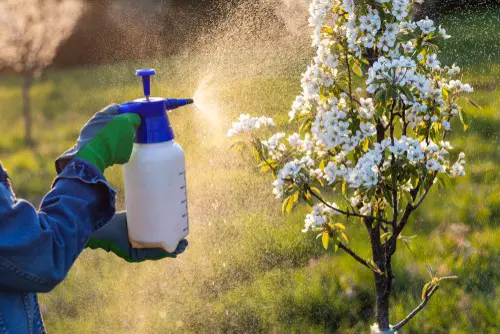
White spots on plant leaves can be a sign of fungal or bacterial infections, insect infestations, or environmental stress. Identifying the cause of the white spots is crucial for effective treatment.
1. Fungicide Treatments
Fungicides can be an effective treatment for white spots caused by fungal infections. Copper-based fungicides are often recommended for treating fungal diseases on plants, including downy spot and white rust. Follow the instructions on the fungicide label for application and frequency.
2. Home Remedies
Home remedies can also be effective in treating white spots on leaves. A solution of baking soda and water can be sprayed on infected leaves to reduce the spread of fungal infections.
A mixture of neem oil and liquid soap can also be used to treat fungal and insect infestations. Be sure to test any home remedy on a small area of the plant before using it on the entire plant.
3. Preventive Measures
Preventing white spots from developing on plant leaves is the best way to avoid having to treat them. Keeping leaves dry is essential to preventing fungal infections.
Water plants at the base, and avoid getting water on the leaves. Improving air circulation around plants can also help prevent fungal infections. Prune plants to remove overcrowded branches and leaves.
Regularly inspecting plants for signs of disease or infestation can help catch problems early, before they become severe. Removing infected leaves and disposing of them properly can also help prevent the spread of disease.
Cultivation Practices to Prevent White Spots
When it comes to preventing white spots on leaves, proper cultivation practices play a crucial role. Here are some effective methods to prevent the occurrence of white spots on leaves.
1. Proper Watering
Overwatering or underwatering can lead to white spots on leaves. Therefore, it is essential to water plants correctly. Drip irrigation or a soaker hose can be used to provide water directly to the roots while avoiding wetting the leaves.
It is also important to water plants during the early morning hours so that the leaves can dry off during the day.
2. Pruning
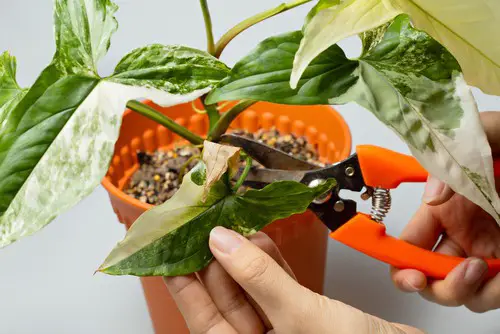
Pruning is an essential cultivation practice that helps in preventing white spots on leaves. Regular pruning helps in removing infected leaves and branches, which in turn, reduces the spread of the disease. It also helps in improving air circulation, which minimizes the chances of fungal growth.
3. Proper Spacing
Proper spacing between plants is crucial in preventing the spread of white spots on leaves. Plants that are too close together can create a humid environment, which is ideal for fungal growth. Therefore, it is essential to maintain adequate spacing between plants to allow for proper air circulation.
4. Use of Resistant Varieties
Using resistant plant varieties is an effective method of preventing white spots on leaves. Resistant varieties are less susceptible to fungal infections and can withstand adverse weather conditions. Before planting, it is essential to research and select plant varieties that are resistant to white spot diseases.
In addition to the above practices, it is also important to use compost and fertilizer to provide adequate nutrients to the plants. It is also essential to monitor the growing season and take necessary measures to prevent the occurrence of white spots on leaves.
Regularly inspecting the undersides of leaves can help in early detection of white spot diseases, which can be treated effectively.
Frequently Asked Questions
How to treat white spots on leaves?
Treating white spots on leaves depends on the underlying cause. If the spots are caused by powdery mildew, a fungal disease that covers leaves and stems in white powder, a fungicide can be used to treat the plant.
If the spots are caused by pests such as spider mites or whiteflies, an insecticide can be used to get rid of the pests. If the spots are caused by a nutrient deficiency, the plant may need to be fertilized with the appropriate nutrients.
What are the white spots on my leaves?
The white spots on leaves can be caused by a variety of factors, including fungal diseases such as powdery mildew, pests such as spider mites or whiteflies, nutrient deficiencies, or environmental factors such as high humidity or low light.
What are the tiny white spots killing my plants?
Tiny white spots on leaves can be caused by pests such as spider mites or whiteflies, which can suck the sap from the leaves and cause them to wither and die.
Fungal diseases such as powdery mildew can also cause tiny white spots on leaves, which can eventually kill the plant if left untreated.
How to get rid of tiny white spots on leaves?
Getting rid of tiny white spots on leaves depends on the underlying cause. If the spots are caused by pests such as spider mites or whiteflies, an insecticide can be used to get rid of the pests.
If the spots are caused by a fungal disease such as powdery mildew, a fungicide can be used to treat the plant. If the spots are caused by a nutrient deficiency, the plant may need to be fertilized with the appropriate nutrients.
What are white chalky spots on plants?
White chalky spots on plants are often caused by powdery mildew, a fungal disease that covers leaves and stems in white powder. The spots can also be caused by pests such as spider mites or whiteflies, which can leave behind a white, powdery residue on the leaves.
How to remove white spots from indoor plants?
Removing white spots from indoor plants depends on the underlying cause. If the spots are caused by pests such as spider mites or whiteflies, an insecticide can be used to get rid of the pests.
If the spots are caused by a fungal disease such as powdery mildew, a fungicide can be used to treat the plant. If the spots are caused by a nutrient deficiency, the plant may need to be fertilized with the appropriate nutrients.

Hey, I’m Lisa and I’ve been an avid gardener for over 30 years. I love writing, talking and living in the garden! Feel free to connect with me on my socials below

